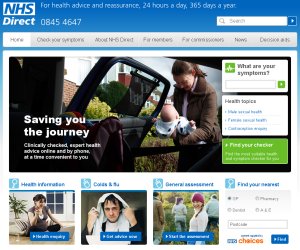 The evaluation of e-health services seems not to be high on the research agenda and yet finding ways to evaluate such initiatives and provide feedback to developers could support existing e-health projects and lead to better quality and efficiency in future initiatives. The outcome would hopefully be to the benefit of patients and healthcare workers alike.
The evaluation of e-health services seems not to be high on the research agenda and yet finding ways to evaluate such initiatives and provide feedback to developers could support existing e-health projects and lead to better quality and efficiency in future initiatives. The outcome would hopefully be to the benefit of patients and healthcare workers alike.
Writing in IJBIS, a team from http://www.nullrunel.ac.uk/bbs at Brunel University, Uxbridge, UK, explain that e-health is a rather broad term that encompasses various disparate activities in what is still an evolving field. The World Health Organization (WHO) sees e-health as “the leveraging of information and communication technology” for healthcare purposes whether connecting providers and patients and governments, educating and informing healthcare professionals, managers and patients or stimulating innovation in care delivery and health systems management.
That is indeed a broad and perhaps less than useful definition given that the variety of e-health applications is vast and ranges from simple self-help guides online for treating common ailments at home to virtual clinics and surgeries offering not only diagnostic consultations between patients and practitioners at distant sites and the possibility of remote treatment.
However it is defined, Brunel’s Hamid Alalwany and Sarmad Alshawi suggest that, “E-health has the potential to change the healthcare industry worldwide in terms of infrastructure, costs and quality of service.” In their analysis of e-health they highlight NHS Direct, a service of the UK’s National Health Service that is available to patients via telephone, a satellite TV channel and on the web. The telephone service handles millions of calls each year while the TV channel is available to about 18 million homes.
The NHS Direct website gets tens of millions of unique visitors each year and offers patients and carers a range of information:
- Self-help guide about treating common health problems at home.
- Heath encyclopaedia which allow users to search for a treatment or condition.
- Comparison of available treatments for specific conditions.
- Answers to common health questions and problems.
- Hot topics on the latest health issues, often debunking tabloid scare stories.
- Database of local health services, including physicians, hospitals, dentists, pharmacies.
- Online health enquiry service.
NHS Direct is one of the biggest e-health services in the world. As such, Alalwany and Alshawi suggest that evaluating it qualitatively and quantitatively could provide researchers with a useful framework with which to study other similar services currently in place and to determine the merits and limitations of experimental and future e-health services.
The team’s analysis of NHS Direct found several limitations the identification of which could either be used to improve that service or guide the development of its successor or other national e-health services, for instance. Either way, their approach could be applied to evaluating holistically any e-health service.
![]() Hamid Alalwany, & Sarmad Alshawi (2012). The rationale of e-health evaluation: the case of NHS Direct Int. J. Business Information Systems, 9 (4), 484-497
Hamid Alalwany, & Sarmad Alshawi (2012). The rationale of e-health evaluation: the case of NHS Direct Int. J. Business Information Systems, 9 (4), 484-497